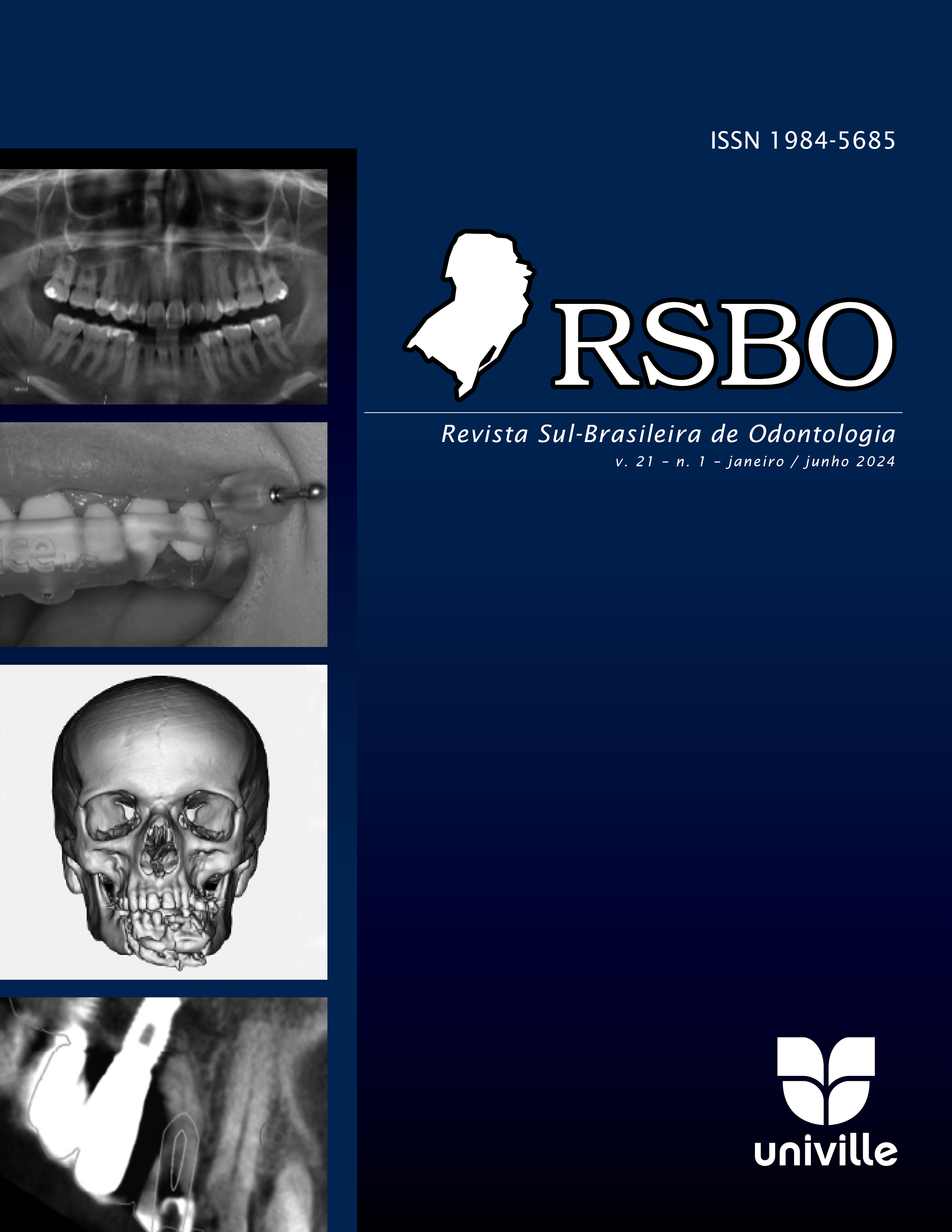Efficiency of ultrasonic, sonic and mechanical complementary cleaning methods in the removal of filling material remaining of oval curved canals
DOI:
https://doi.org/10.21726/rsbo.v21i1.2309Palavras-chave:
Endodontic; microcomputed tomography; retreatment; root canal irrigation.Resumo
The aim of this study was to compare efficacy in removing filling material remaining in oval and curved canals using different complementary cleaning methods. Material and methods: Sixty single[1]rooted tooth with oval shaped canal with curvature were prepared up to size 25 and .08 taper, filled and subsequently retreated. The teeth were then scanned in micro-CT and divided into 6 groups (n = 10) according to the complementary cleaning method: CUI with Irrisafe, CUI with NiTiSonic, PUI with Irrisafe, PUI with NiTiSonic, Eddy and XP-endo Finisher R. After, the teeth were newly scanned in micro-CT. The volume of the filling material remaining before and after the application of the complementary methods was calculated and then calculated the percentage of material removed total and in the apical region. Data were submitted to the Kruskal-Wallis, Dunn and Wilcoxcon tests with a significance level of 5%. Results: No suplementary cleaning method completely removed the remaining of filling material, however, all significantly reduced the volume, both in the apical region and in the total root canal (p<0.05). There was no significant difference among the groups tested, regardless of the region analyzed (p>0.05). Conclusion: No method was effective in completely removing the remaining filling material. All complementary cleaning methods significantly reduce the volume of material, with no difference among them.

